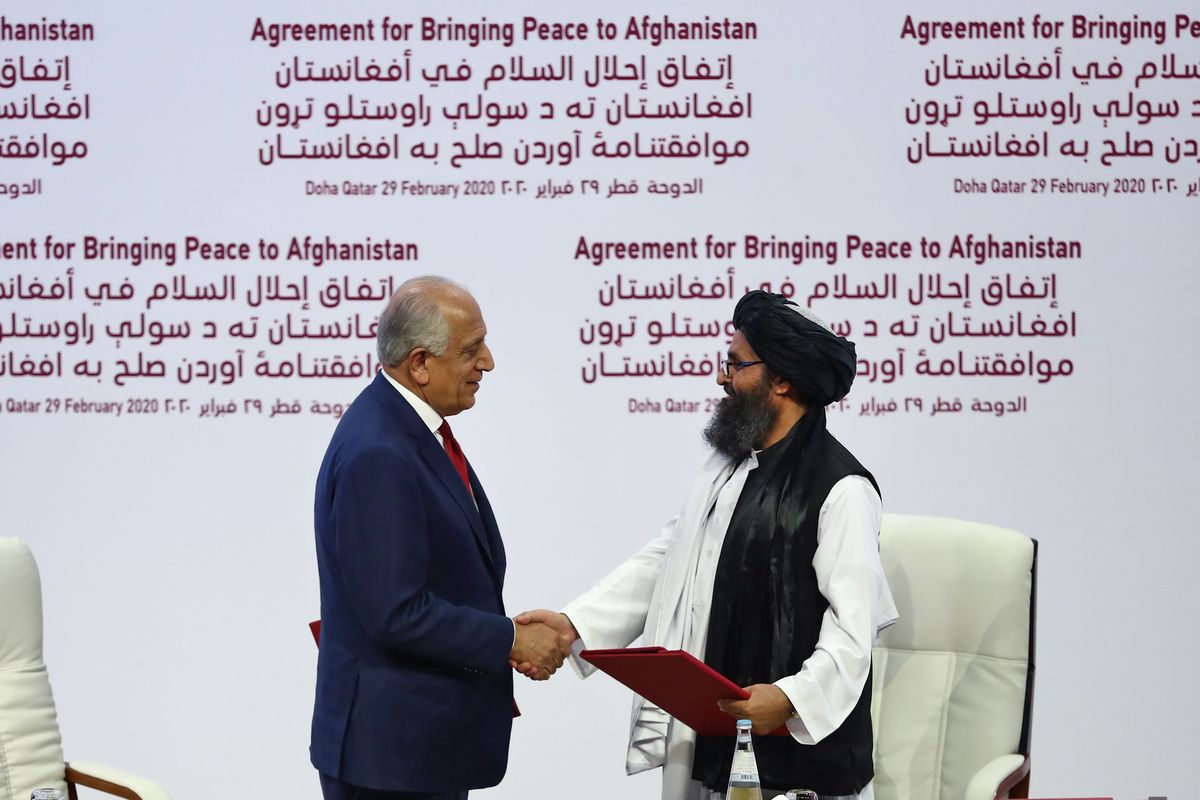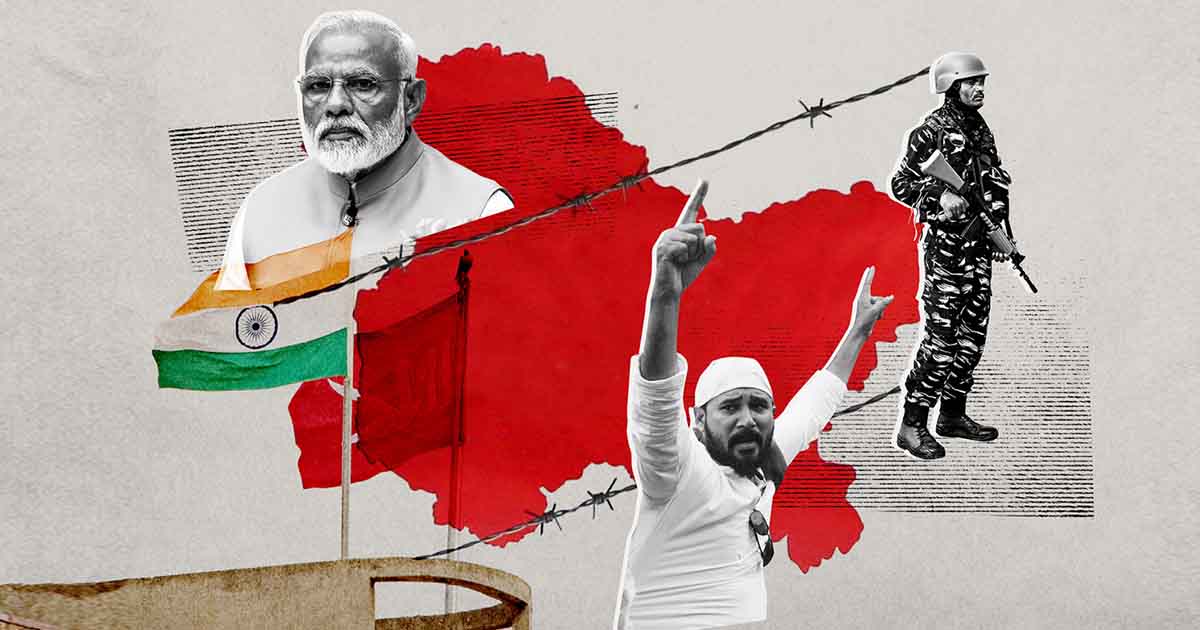
The Janus-faced pseudo Afghanistan analyst community — local and foreign — is in overdrive telling all and sundry about the futility of peace-making with a treacherous Taliban. That the blood-thirsty Taliban did not keep their side of the deal and that the United States military presence is the panacea of all that afflicts Afghans and Afghanistan. And that the remaining contingent of 2,500 or so US troops would do, what over 150,000 strong ISAF/Nato forces, from some 50 countries, could not do in over 20 years.
That Ashraf Ghani and his cabal is the best thing that has happened to Afghanistan and that the primitive, uncouth, uncultured Taliban will drag Afghanistan — the oasis of development, modernity, peace and harmony — back into the Stone Age; rolling back the gains of Afghan minorities, especially the women folk; and rescinding the Afghan Constitution.
And the trumped-up narrative of the liberal brigade and their Western backers “seems” to be sinking in, as President Joe Biden has already ordered a review of the year-old Doha peace agreement. The US military now intends on making the withdrawal condition-based and Nato would reconsider pulling out its 11,000 strong contingent from a dozen European countries, in training/advisory deployment with the Afghan National Security Forces (ANSF).
In an ironic flip-flop of the Afghan scene, the civilised West is evasive in keeping its word with the “untrustworthy savages” aka the Taliban, who never committed to peace on foreign terms and said so loudly and clearly, while pursuing their “fight and talk strategy”.
I had covered the essentials of the peace deal in my piece, “Afghanistan — Future of the Past”, published here on April 30, 2020. Let us revisit what was agreed. The three-part agreement contains a preamble and confidential annexes dealing with US deployment details, ostensibly not made public because of ISIS.
The preamble comprises four points, namely; (a) guarantees/enforcement mechanisms by the Taliban to prevent the use of Afghan soil against the US/allies; (b) timeline for withdrawal of all foreign forces; (c) commencement of intra-Afghan dialogue on March 10, 2020; and (d) a permanent/comprehensive ceasefire as “an item” on the agenda of intra-Afghan negotiations, besides Afghanistan’s future political roadmap (power-sharing). Points (a) and (b) were to lead to the last two points. The Taliban committed to enforce the agreement in areas under their control till the formation of post-settlement Afghan government. The subsequent three-part text expands the above points.
In Part One, the US committed to a complete withdrawal of all forces/civilian staff/contractors from all military bases/elsewhere in 14 months (by May 1, 2021). The US categorically committed to releasing the Taliban combat/political prisoners within three months starting with the commencement of the intra-Afghan dialogue scheduled on March 10, 2020.
Both these conditions remain unfulfilled just like the removal — in totality — of sanctions and travel restrictions against the Taliban. The Taliban promised that released prisoners shall pose no threat to US/allied forces, and have kept their promise. America/allies also committed to not interfere with the domestic affairs and territorial integrity or political independence of Afghanistan.
In Part Two, the Taliban undertook not to allow the use of Afghan soil against the US/allies. Though not in power, they have kept this pledge. The US and its agencies, however, continue to fish in troubled waters. ISIS in Afghanistan — given the Indian machinations/presence — raises many unanswered questions. The Taliban, however, have refrained from attacks on US/foreign troops, as committed. Meanwhile the US has been liberally using its Special Forces and USAF in targeting the Taliban, when supporting ANSF.
Part Three deals with UNSC endorsement of the agreement. Both parties undertook to have improved relations. And the US committed to seek economic assistance for Afghanistan’s reconstruction.
Foot dragging by Ashraf Ghani and his government over prisoner exchange is well known and has been instrumental for the non-commencement of the intra-Afghan dialogue. The Taliban could not and did not offer any unconditional ceasefire in an atmosphere of mistrust; thus “reduction in violence”, a phrase coined by Pakistani interlocutors, remains a pipedream. The US had also retained and relocated some CIA personnel — in violation of the agreement — to its embassy in Kabul, to advise Orbaki militias and others groups like the Khost Protection Force (KPF), operating under the Afghan National Directorate of Security (NDS).
The nay-sayers to peace, besides the Ghani administration, include the Indian lobby, the US deep state and Washington Beltway Community (the contractors). They are working overtime with the new US administration to rescind the agreement. Ghani’s objective is pure survival; India wants Afghanistan troubled to keep Pakistan negatively embroiled: and the Beltway community is simply out there for profit. While the US military and deep state does not want to concede defeat to a rag-tag enemy and would even reinforce failure to salvage some pride. Other players like China, Russia, Iran and Pakistan vie for various degrees of peace and stability in Afghanistan for known political, geo-strategic and commercial reasons.
President Biden is said to be at the horns of dilemma. Picking peace goes against the “moralist argument” of a demonic Taliban not bringing the operational tempo down; so peace would demonstrate imperial weakness. And is resisted by the formidable cabal of nay-sayers. Continuing the fight is reinforcing failure — a poor strategy.
The Trump-Khalilzad combine had realised the hopelessness of the Afghan situation militarily and had agreed to a tilted (Afghan government perspective) agreement. President Biden would too, after he dusts off his old notes and matches them to the altered ground realities. For those, arguing that the Taliban are tired; enough to note that the Taliban generations have learned to live with the conflict and have developed a sustenance war economy. And while the occupation forces have the watches, the Taliban have the time.
For reasons explained in my writings, the Taliban cannot and would not concede to anything lesser than a lion’s share in future political dispensation, as they were the one who shed sweat, blood and tears, fighting for over two decades, to liberate Afghanistan; when others — now vying to share the table — colluded with the occupation forces. They are the only stakeholders able to defeat ISIS. And they are the only party that can keep Afghanistan united and peaceful — an urgent priority compared to women’s rights and the Constitution. This simple logic is not rocket science.
Nay-sayers can push President Biden to continue the war, causing death and destruction and re-learn what the Soviet Union learnt in 10 years, that Afghanistan belongs to the indigenous freedom-fighters… the Taliban.
And freedom movements can never be suppressed. The Express Tribune


